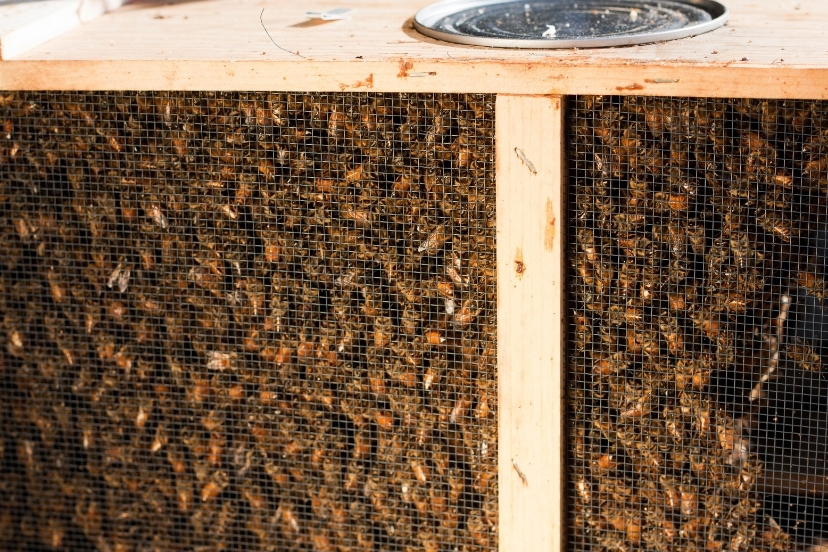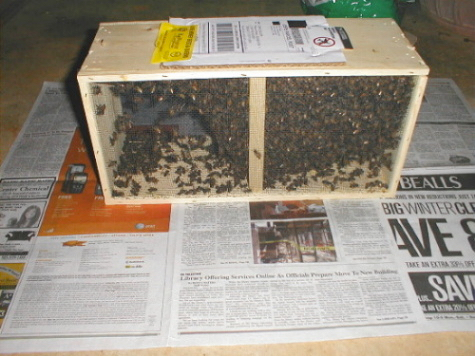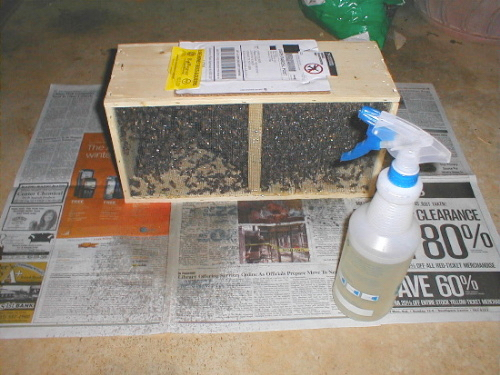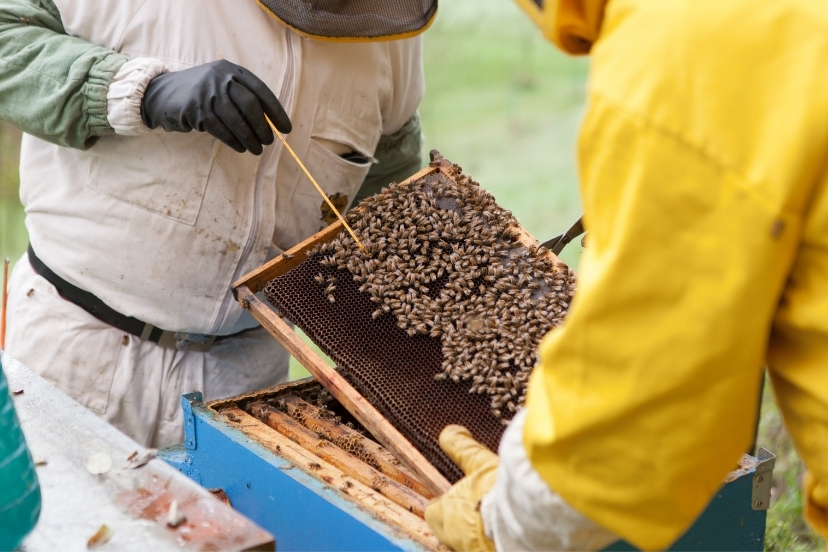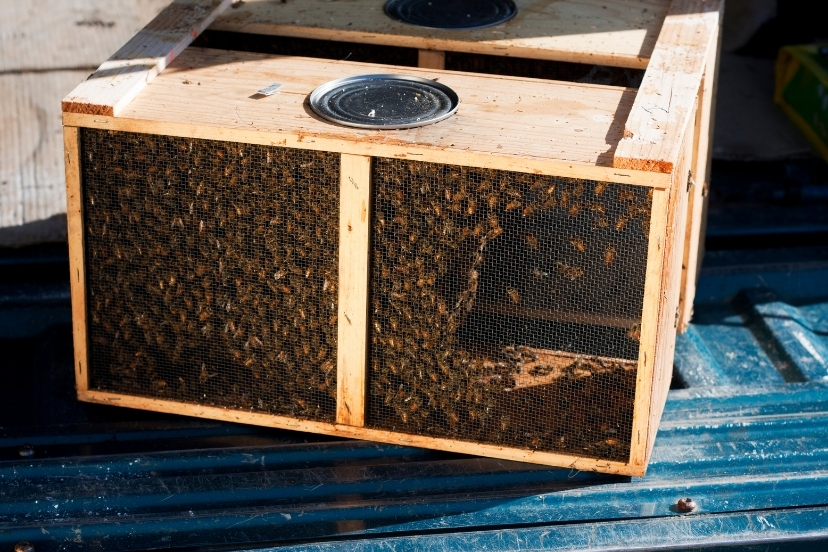I’ll need package bees to stock my new hive.
In my opinion, using packaged bees is the best way to start your first hive.
If you haven’t already read my page on buying bees and installing them in your hive, you might want to look through it so you’ll have a good understanding of the process.
February 14: Bees Are On Order
I’ve ordered my bees. I ordered them from BeeWeaver Apiaries in Navasota, Texas.
I’ve purchased bees from them many times through the years, and I’ve always been pleased with them. Their more than 120 years of operation attest to a longstanding commitment to service and quality.
And their bees are mite resistant. In the 1990’s, BeeWeaver stopped treating their hives for varroa mites – a brave move. The hives that survived without treatment became their breeder stock.
The bees (a 3 pound package with queen) are scheduled to arrive around April 14, so I have plenty of time to get ready.
A lot more time than I want, really.
In my location, I could install the bees as early as late February.
But it’s pretty much impossible to get bees that early – and I kept putting things off, and ordered rather late.
If you’re planning to start a hive, order your bees as early as possible.
Don’t Wait Too Long to Order YOUR Bees…
If you wait too late to order your bees, you risk not getting them at all.
Each season, there’s a limited window in which bee suppliers are able to assemble and ship packages. And it’s not unusual for demand to exceed supply.
So it’s best to get your order placed as soon as you’re certain of your plans.
While I’m waiting for my bees, I’ll build my hive, and get my hive location ready.
April 12 – They’re Here
Got a call from the Post Office this morning letting me know that my package bees had arrived, and could I come pick them up? (She left off the “soon,” but I could hear it in her voice!)
So I left right away to pick them up.
I prefer not to leave a package of bees at the Post Office any longer than necessary.
You never know for sure that the bees are being stored properly – that they’re not in the sun, or someplace where they’ll get too warm.
So whenever I’m expecting package bees, and get the “your bees are here” call, I always pick them up as quickly as I can.
But I should also add that I haven’t always been able to pick them up immediately, and have never had a problem with a package being harmed.
GET THESE BEES OUT OF MY POST OFFICE!!!
No, nobody has actually ever said anything like that to me. But I can usually detect a bit of relief when I show up to take the bees off their hands.
In fact, I had to chuckle a bit this morning when the clerk retrieved my package bees from the back room.
She walked up to the counter holding the package well out in front of her body, and handling it with extreme delicacy.
You might of thought the package was ticking instead of buzzing!
But she actually seemed rather interested in the bees, and asked several questions about them.
And I didn’t have to jostle my way out of the busy Post Office. People obligingly cleared a path for me as I made my way to the exit with my buzzing bees.
There’s just something about a package containing thousands of buzzing bees. Sort of gets peoples attention!
Anyway, I got the package bees home, and they appear to be in good shape.
You can see that there are a few dead bees on the floor of the package, but that’s normal. In fact, it wouldn’t be unusual for there to be quite a few more dead bees.
And most package suppliers add a few extra bees to allow for normal die-off while in transit.
Keep the Bees Cool and Quiet
Early evening is the best time to install a package, so I’ll wait until then to hive them.
In the meantime, it’s important to keep them cool and quiet.
And it’s best to put them someplace where there won’t be a lot of commotion to disturb them. A dark or dimly lit location is also preferable.
I’m going to store them in the dim and cool garage.
I’ll also spray some sugar syrup on the screen of the package several times during the day.
That helps to quiet them, and gives them sustenance just in case the feeder can is nearly empty (which it probably isn’t).
The sugar syrup is made with a 1-to-1 ratio of sugar to water.I simply stir the sugar into the water in a large container on the stove.
Using LOW heat will help to dissolve the sugar.
(I’ll make certain, though, that the sugar syrup is lukewarm when I spray it on the bees. I certainly don’t want to spray hot syrup on the bees, but it shouldn’t be cold, either.)
I’ll also need to feed the bees after they’ve been hived, so I’ll mix up more feed than is required for only the sprayer. A 5-pound package of sugar will yield enough sugar syrup for the sprayer and several feed jars.
I use a THOROUGHLY CLEAN household sprayer (like you might use to mist house plants) and spritz some of the sugar syrup onto the screen cage.
No need to worry about spraying it on the bees; they’ll lick it off of each other.
(Notice that the package bees are placed on newspaper to avoid a sticky floor from the over spray).
This evening, the bees will complete their journey when I install them in their new home.

